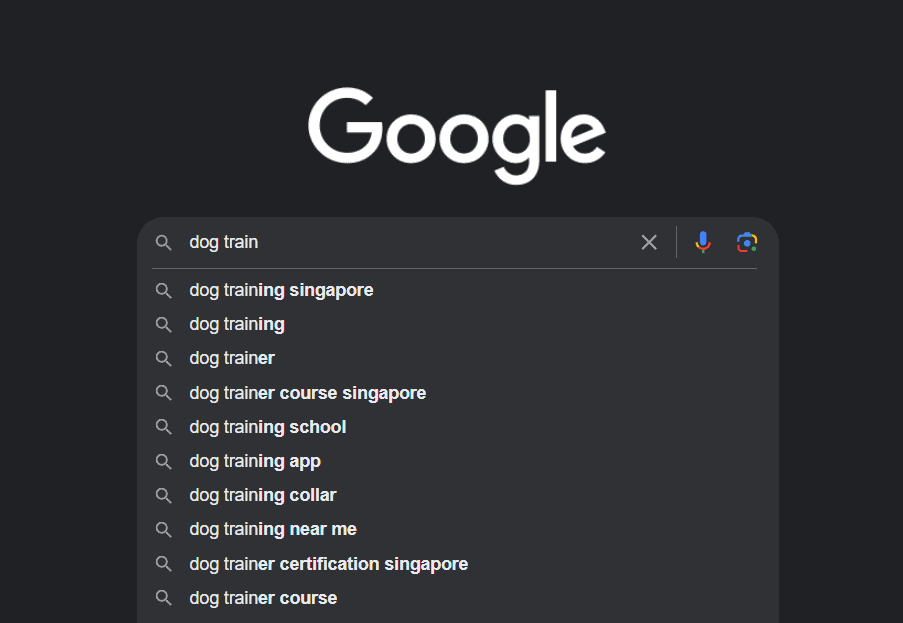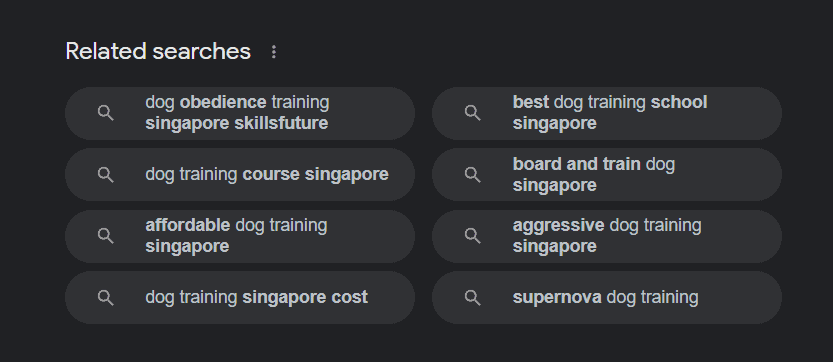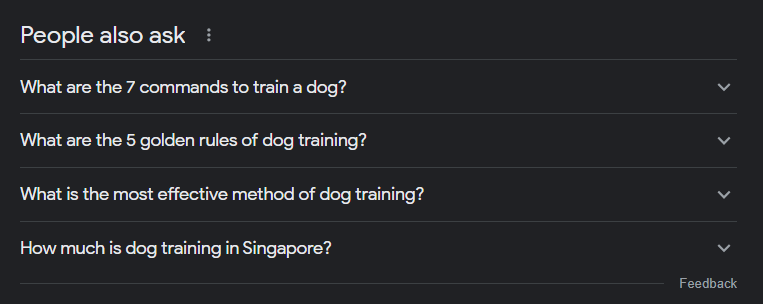Google’s algorithm is constantly changing and evolving, which can be both good and bad for website owners and SEOs. However, one thing that has remained fairly steady over the years is using Latent Semantic Indexing (LSI) keywords.
These are closely related keywords that are used to help Google’s algorithm better index and rank your site.
LSI keywords are simply a way of telling Google what your content is about.
By including these keywords in your content, you can help Google better understand the topic of your article and index it more accurately.
In turn, this can help improve your site’s ranking for certain keywords.
What Is Latent Semantic Indexing?
Latent Semantic Indexing (LSI) is a smart technique that search engines, including Google, use to get the gist of what’s written in online content.
Here’s the deal: LSI goes beyond just scanning for specific keywords; it digs into how words relate to each other. Imagine it as a way for Google to play detective and figure out the overall meaning of an article or blog post.
So, when you type something into Google, and it magically returns results that seem to match what you’re looking for, that’s partly thanks to LSI. This tech helps Google understand the purpose behind content, which, in turn, helps it rank that content for the right keywords.
The roots of Latent Semantic Indexing go back to the late 1990s. Over time, Google adopted it to make its search results even more spot-on and helpful.
Now, let’s break it down a bit. LSI isn’t about hunting for a specific keyword; it’s more about grasping the connections between words and concepts. This is gold for internet marketers and content creators who want their stuff to show up in searches.
Think of it like this: You’re not just trying to be seen by throwing in a particular word; you’re crafting content that aligns with what people are genuinely searching for. It’s about giving your content the best shot at ranking high on Google and having that coveted “relevant” tag.
When you’re working with LSI, tools like SurferSEO can be your allies. They help you identify related terms that Google might appreciate. These are the terms that enhance your content, making it more Google-friendly.
In practical terms, when you’re optimizing your content, sprinkle in those LSI keywords where they make sense. This could be in your title tag, image alt text, or just naturally throughout your piece. It’s like giving Google’s algorithm a little nudge and saying, “Hey, my content covers all these aspects; it’s not just about one thing!”
In the vast realm of digital marketing and SEO, understanding and using LSI keywords are like having a secret weapon. It’s your way of speaking Google’s language and saying, “This is the content you’re looking for.”
What Are LSI Keywords?
LSI keywords, or Latent Semantic Indexing keywords, are words and phrases closely associated with your main topic or primary keyword. Picture them as words that naturally go hand-in-hand with what you’re talking about. So, if your focus is on “dog training,” LSI keywords might include things like “teaching your dog to sit” or “dog training collars.”
Some people mistakenly think these are just random words picked by search engines to support a target keyword, but that’s not the case. It’s more about understanding how people think and what they’re likely to search for when looking up a specific subject.
In simpler terms, LSI keywords help search engines figure out what users are really after when they search. For instance, if someone looks up “dog training,” and the results show videos from channels like Pampered Pawz and The Dog Training Dude, those channels might have different focuses. Pampered Pawz might cover general dog training, while The Dog Training Dude might dive into specifics like obedience training and tricks.
Now, let’s talk about why this matters. When you use LSI keywords, you’re helping search engines, like Google, grasp the true intent behind a user’s search. It’s not just about throwing in words; it’s about creating content that aligns with what people are genuinely looking for.
So, when you’re working on a web page or a blog post, incorporating these related terms can boost your chances of showing up in relevant search results. It’s like speaking the same language as your audience and, in turn, improving your page’s ranking power on Google and other search engines.
Now, keep in mind, this isn’t about tricking search engines with a bunch of unrelated words. It’s about being smart and understanding what words and phrases naturally fit with your main topic. It’s like giving Google’s crawlers a clearer picture of what your content is all about.
In the world of digital marketing and SEO, using LSI keywords is a savvy move. It’s part of the SEO toolkit that internet marketers use to enhance their content. By adding related words and phrases, you’re essentially telling Google, “Hey, my content is not just about this specific lsi keyword; it’s about all these related things too.”
In practical terms, you can find LSI keywords through various tools, like SurferSEO. These tools analyze search terms, giving you insights into what terms are semantically related to your page’s main keyword. So, when you’re optimizing your content, consider using these LSI keywords in elements like the title tag, image alt text, and throughout your web page.
How Does Latent Semantic Indexing Work?
Understanding how Latent Semantic Indexing (LSI) works involves taking a trip down the memory lane of search engine evolution.
Back in the early days of search engines, things were pretty straightforward. Imagine using AltaVista to look up information on the Titanic. You’d type in “Titanic,” and the search engine would return results based on how many times that exact word appeared on different web pages.
Then came Google, shaking things up. Instead of just counting keyword occurrences, Google introduced PageRank, a concept that looked at the importance and relevance of web pages. But there was still a missing piece. Google’s algorithm could only grasp individual words on a page; it couldn’t understand the relationships between those words.
Enter Latent Semantic Indexing, the game-changer.
LSI takes those individual-related words and phrases and goes beyond counting them. It’s like giving Google’s algorithm glasses to see the connections between words in a piece of content. If we stick with the “dog training” example, LSI helps Google understand not just that you’ve mentioned “dog training” but how terms like “teaching your dog to sit” or “obedience training” relate to the overall content.
So, instead of a robotic focus on isolated words, LSI looks at the bigger picture—the meaning of the text as a whole. This way, Google can better determine the relevance of your article when someone searches for something like “dog training.”
In practical terms, when you’re creating content, LSI becomes your search engine optimization sidekick. Tools like SurferSEO can assist by identifying semantically related terms that enhance your content’s relevance. It’s like having a conversation with Google’s algorithm and saying, “Hey, my article is not just about a single word; it covers all these related aspects too.”
In essence, LSI adds a layer of sophistication to how search engines understand and interpret content. It’s about understanding not just the words on a page but the relationships between them—a more human-like comprehension in the world of algorithms.
What Are The Benefits OF Using It?
Using LSI keywords in your content comes with a bunch of perks that can significantly boost your online presence. Let’s dive into the benefits:
Expanded Keyword Reach:
There is a keyword research process that helps you reach your target in digital marketing web content. By incorporating related terms and other keywords in your content, you increase the chances of ranking for a variety of relevant keywords. This means more opportunities for your content to be discovered by different search queries.
Enhanced Content Understanding:
From an SEO perspective, Google isn’t just a search engine; it’s evolving into an interpreter of content that gives relevant results afterwards. LSI assists Google in comprehending the nuances of your content in the SEO community. It’s like providing Google with a contextual map, helping it understand the meaning behind your words. This deeper understanding improves the accuracy of matching your content with the right search queries.
Quality Traffic Boost:
It’s not just about attracting any traffic; it’s about attracting the right traffic. LSI technology ensures that the visitors you draw in are genuinely interested in what you offer. By aligning your content with a broader spectrum of related terms, you’re more likely to attract an audience in content marketing that is not just curious but genuinely engaged in your subject matter.
Using LSI keywords isn’t just an SEO trick; it’s a strategic move to make your content more accessible, understandable, and appealing to both search engines and your target audience. It’s like speaking the language of your users and Google at the same time, creating a win-win situation for visibility and relevance.
How Does Latent Semantic Indexing Affect SEO?
The impact of Latent Semantic Indexing (LSI) on your SEO efforts is quite significant, playing a crucial role in how Google interprets and ranks your content.
Improved Content Understanding:
LSI helps Google move beyond the basics of individual words and phrases. It allows the search engine to understand the relationships between terms and concepts in your content. This deeper understanding enables Google to grasp the overall meaning of your article, contributing to a more accurate and nuanced interpretation.
Content Quality Matters:
To make the most of Latent Semantic Index, focus on making high-quality, well-researched content. This isn’t about keyword stuffing; it’s about providing valuable information. Quality content helps Google understand the relationships between different terms and concepts within your article, increasing the likelihood of ranking for relevant results of keyword ideas.
Diverse Terms and Phrases:
Variety is key. Using a range of related words and phrases within your content is vital for helping Google understand the connections between them. This diversity reinforces the richness of your content and assists Google in presenting it as a valuable resource for users.
When you’re working on your web pages, think beyond the primary keyword, and semantically related words, and consider the related terms that can elevate your on-page SEO content’s relevance in the eyes of Google and, consequently, your audience.
Google & LSI Keywords
Google has indeed integrated LSI keywords into its search algorithm for quite some time, and their impact on rankings is widely acknowledged.
However, the precise role of LSI keywords in Google’s algorithm isn’t a one-size-fits-all scenario, unlike traditional keyword tools. Some SEO experts argue that Google goes beyond relying solely on LSI and takes into account other metrics like user engagement and dwell time to decipher the true essence of a piece of content.
In simpler terms, while LSI keywords play a vital role in how Google understands and categorizes content, they are just one piece of the puzzle. Google doesn’t merely scan for words but also pays attention to how users interact with a page and how long they stick around. This user-centric approach helps Google gauge the relevance and quality of content more dynamically.
So, when you’re optimizing your content, it’s not just about sprinkling in LSI keywords; it’s about creating engaging, informative material that keeps visitors interested. Google is like a savvy reader, looking beyond specific words and focusing on the overall experience your content provides.
In the dynamic landscape of SEO, it’s crucial to embrace a holistic perspective. LSI keywords are significant, but so are user behaviour metrics, reflecting Google’s commitment to delivering the most valuable and relevant content to its users.

Why are LSI keywords important?
LSI keywords are still super important for making your website stand out on the internet. Even though the world of SEO is always changing, these keywords play a big role in making your content more relevant and better overall.
You can find these keywords by doing some good old keyword research, which is a solid part of any SEO plan, despite the changes happening in the digital world.
By adding words and phrases in your content that are related to your main topic, you’re basically helping Google understand your stuff better. This, in turn, boosts your chances of showing up higher when people search for things related to what you’re talking about.
In the world of online content, using these semantically related words is like giving Google a roadmap to understand your content better. It’s a simple but effective way to make sure your stuff gets noticed and ranks well in searches.
7 Ways How to Find And Use Related Words and Phrases
If you are familiar with a topic, you can easily add related keywords or phrases to your content.
However, if you’re new to a topic or not sure which keywords or related words will be most relevant to your audience, there are some ways that can help.
1. Use common sense
One of the simplest ways to find LSI-related keywords is to use your common sense and brainstorm relevant terms and phrases related to your main keyword.
For example, if you were writing an article on the topic of “dog training”, some relevant LSI keywords could be “dog obedience training”, “puppy training” and “how to train your dog”.
2. Use Google Autocomplete

Google Autocomplete is a great way to find LSI keywords.
Simply start typing your main keyword into the Google search bar and see what terms and phrases Google suggests.
3. Use Google’s Related Searches
Another great way to find LSI keywords is to use Google Related Searches.
Simply enter your main keyword into Google and scroll to the bottom of the search results page. Here you will see a list of related searches, which are often excellent LSI keywords to target.

4. Use Google’s People Also Ask Results

Google’s “People Also Ask” results are a great way to find LSI keywords.
Simply enter your main keyword into Google and scroll down to the “People Also Ask” section.
Here you will see a list of questions that are related to your main keyword.
These questions can often be used as LSI keywords.
5. Look at knowledge bases
Other online resources, such as knowledge bases, glossaries, and specialized websites can also be a great source of LSI keywords.
For example, if you were writing about dog training, you could look at popular websites like Dogtime, PetMD, and Vetstreet for relevant terms and phrases.
You could also search for “dog training glossary” or “how to train a dog” on Google and see what types of resources it returns.
6. Use Google’s Natural Language API
Google’s Natural Language API is another great tool for finding LSI keywords.
This powerful tool allows you to enter a piece of text and analyze it in detail, looking at which terms and phrases are most closely related.
You can then use this information to identify excellent LSI keywords that you can incorporate into your content.
7. Use an LSI keyword tool
Another option is to use a dedicated LSI keyword tool, which can quickly and easily generate lists of semantically related keywords and phrases for any topic.
These tools are often very accurate, and many provide additional metrics such as search volume and competition level.
Some popular LSI keyword tools include Moz Keyword Explorer, SEMrush Keyword Magic Tool, and LSI Graph.
Overall, LSI keywords are an important part of any SEO strategy, as they help to improve a website’s ranking by improving its overall quality and relevancy.
By using research tools and other techniques, you can easily find relevant LSI keywords to target in your content.
Whether you are writing an article, creating a video script, or optimizing your website for search engines, including these keywords can help you rank higher and reach your target audience more effectively.
Making use of LSI keywords?
In addition to the earlier advice, here are a few more things to consider when using LSI keywords in your content:
Start with Research:
Before diving into writing, research your topic and pinpoint the main keyword you want to focus on. Then, create a list of words and phrases related to that main keyword.
Natural and Relevant Integration:
When adding LSI keywords, make sure it sounds natural and fits well with your topic. Avoid using generic or overused related keywords, as it might make your content sound like spam.
Avoid Keyword Overload:
Resist the temptation to stuff your content with too many LSI keywords. This can lead to keyword overload and reduce your content’s relevance to search engines. Quality is more important than quantity.
Diversify Your Keywords:
Use a variety of LSI keywords throughout your content, and mix up where you place them. This not only enhances your writing but also boosts your rankings in search engines.
By following these tips, you can smoothly incorporate these keywords into your writing in a way that feels natural and works effectively. It’s all about creating content that not only resonates with your audience but also catches the attention of search engines.
Conclusion
In summary, including LSI keywords in your content is a key element of a successful SEO strategy. These words play a crucial role in boosting your search engine rankings and aiding Google in comprehending the essence of your content. This becomes particularly valuable in a competitive online environment where standing out is essential, given the intense competition for keywords.
By incorporating LSI keywords effectively, you not only enhance your content’s visibility but also ensure it aligns seamlessly with what users are searching for. Using these related terms is a smart move to stay ahead in the game. So, find related keywords to optimize your content for both user engagement and search engine recognition.
LSI Keywords FAQs
How do I use LSI keywords in an article?
One of the best ways to use LSI keywords in your content is to incorporate them naturally into your writing.
This means that you should include them in a way that makes sense within the context of your article, and you should also make sure that they are relevant to the topic at hand.
Do LSI keywords matter?
Yes, LSI keywords are an important part of SEO and content marketing.
By including relevant, semantically related terms and phrases in your content, you can help Google to better understand your topic and improve your ranking for relevant keywords and phrases.
What are the key problems of LSI?
There is no definitive evidence to suggest that Google uses LSI keywords in its algorithm, which can make it difficult to know how best to use them in your SEO strategy.
Additionally, LSI keywords can be difficult to identify and incorporate into your content, which can lead to issues with keyword density and keyword cannibalization.
Finally, it can be challenging to determine the exact impact of LSI keywords on your search rankings, which can make it difficult to know whether or not they are worth the effort.
How many LSI keywords should I use?
There is no magic number of LSI keywords to use in your content, but as a general rule, you should aim to include 2-3 per 100 words.
This will ensure that your content is relevant and semantically related to your main keyword, without overdoing it and risking keyword stuffing.
Do LSI keywords have any disadvantages?
One potential disadvantage of using it is that it can be difficult to incorporate it into your content in a way that sounds natural.
Additionally, if you stuff your content with too many LSI keywords, you run the risk of keyword cannibalization and decreased search engine relevancy.
Finally, it can be challenging to determine the exact impact of LSI keywords on your search rankings, which can make it difficult to know whether or not they are worth the effort.
Is LSI and LSA the same?
No, LSI (Latent Semantic Indexing) and LSA (Latent Semantic Analysis) are not exactly the same, but they are related concepts.
LSI generally refers to the use of mathematical and computational methods to discover and understand the relationships between words and terms in a body of text. It’s commonly used in the context of search engines to improve the understanding of the content’s meaning.
LSA, on the other hand, specifically refers to one technique within LSI. Latent Semantic Analysis is a method of analyzing the relationships between words in large datasets, often using mathematical and statistical techniques like singular value decomposition. LSA helps in uncovering the latent, or hidden, semantic structure in the relationships between words.









